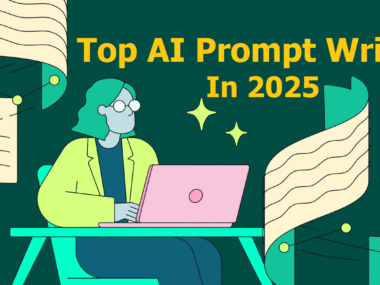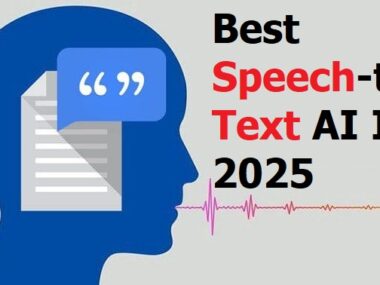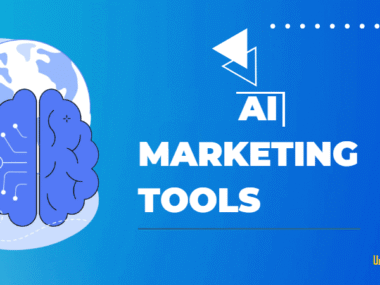In today’s data-driven world, businesses have access to vast amounts of data. However, the challenge lies in effectively analyzing and interpreting this data to make informed decisions. This is where Artificial Intelligence (AI) for data analytics comes in. By leveraging AI-driven tools, businesses can process large datasets, extract actionable insights, and optimize decision-making processes with greater speed and accuracy.
In this article, we’ll explore the role of AI in data analytics, its benefits, the tools available, and how businesses can leverage AI to transform their data analysis processes.
What is AI for Data Analytics?
AI for data analytics refers to the use of artificial intelligence technologies, such as machine learning (ML), natural language processing (NLP), and neural networks, to analyze and interpret large sets of data. Unlike traditional analytics methods, which rely heavily on human input, AI-powered data analytics tools can process complex data, identify patterns, and provide insights automatically, often in real-time.
AI enhances data analytics by automating repetitive tasks, discovering hidden patterns in data, and providing predictive insights that help businesses make smarter decisions. These tools can be applied across various industries, including finance, healthcare, retail, and marketing, to optimize operations, improve customer experiences, and boost profitability.
The Benefits of AI in Data Analytics
1. Enhanced Decision-Making
One of the key advantages of AI-powered data analytics is the ability to make data-driven decisions with greater accuracy. AI tools can analyze vast amounts of structured and unstructured data, providing valuable insights that would be challenging for humans to uncover. With AI, businesses can make faster and more informed decisions that align with their goals.
2. Improved Predictive Analytics
AI can enhance predictive analytics by using machine learning algorithms to predict future trends and behaviors based on historical data. This is particularly useful for forecasting customer demand, predicting market trends, and anticipating potential risks. Businesses can use these insights to optimize inventory management, personalize marketing efforts, and prepare for future challenges.
3. Automation of Data Analysis Tasks
AI automates many of the time-consuming and repetitive tasks associated with data analysis. For example, AI tools can automatically clean, process, and organize raw data, allowing data analysts to focus on more strategic tasks. This automation not only saves time but also reduces the risk of human error, leading to more accurate results.
4. Enhanced Data Visualization
AI-driven data analytics tools can automatically generate visual representations of data, making it easier for businesses to interpret and understand complex information. Through advanced data visualization techniques, AI helps users identify patterns, trends, and outliers that may not be immediately obvious in raw data. This improves data comprehension and aids decision-making.
5. Cost Efficiency
By automating data analysis and reducing the need for manual intervention, AI tools can significantly reduce the cost of data analytics. Businesses can process larger volumes of data without increasing their workforce, which leads to more cost-effective operations and better resource allocation.
How AI for Data Analytics Works
AI for data analytics operates by leveraging several advanced technologies, including:
1. Machine Learning (ML)
Machine learning is at the core of AI for data analytics. It involves training algorithms to recognize patterns in data and make predictions based on those patterns. Over time, machine learning models improve as they are exposed to more data, enhancing their ability to predict future trends with greater accuracy. For example, ML can be used to forecast customer behavior, predict financial trends, and identify fraudulent activities.
2. Natural Language Processing (NLP)
Natural language processing is a subset of AI that focuses on enabling machines to understand and interpret human language. NLP is particularly useful in analyzing unstructured data, such as customer reviews, social media posts, and survey responses. By using NLP, businesses can extract insights from textual data and gain a better understanding of customer sentiment, market trends, and emerging issues.
3. Neural Networks
Neural networks are designed to mimic the human brain and are particularly effective in processing complex data. They are used in deep learning models to identify intricate patterns and relationships in large datasets. Neural networks are widely used in image recognition, voice recognition, and other tasks that require the analysis of unstructured data.
4. Big Data Analytics
AI excels in handling big data, which refers to datasets that are too large or complex for traditional data-processing methods. AI-powered analytics tools can process big data in real-time, identifying trends, correlations, and anomalies that help businesses make timely and informed decisions.
5. Automated Data Cleaning and Preprocessing
Data preprocessing is a crucial step in the data analytics process. AI tools can automatically clean and preprocess raw data by eliminating errors, filling in missing values, and standardizing data formats. This ensures that the data used for analysis is accurate and ready for further processing.
Top AI Tools for Data Analytics
Several AI tools are available to help businesses leverage the power of AI for data analytics. Here are some of the most popular and effective AI tools for data analytics:
1. Google Cloud AI
Google Cloud AI provides a suite of AI tools and machine learning models that businesses can use to analyze data, build predictive models, and automate workflows. With Google Cloud AI, businesses can leverage pre-built models or create custom models using their own data. It offers a powerful platform for big data analysis and machine learning.
Key Features:
- Machine learning models for predictive analytics
- Natural language processing for text analysis
- Data visualization tools
- Scalable infrastructure for big data processing
2. Microsoft Azure AI
Microsoft Azure AI offers a wide range of AI services, including machine learning, deep learning, and analytics tools. It helps businesses build and deploy AI models, analyze large datasets, and gain actionable insights. Azure AI integrates with other Microsoft tools, such as Power BI, to provide seamless data analytics capabilities.
Key Features:
- Pre-built machine learning models
- AI-powered data analytics and visualization tools
- Integration with other Microsoft services
- Scalable cloud infrastructure
3. IBM Watson Analytics
IBM Watson Analytics is a powerful AI-driven analytics tool that uses machine learning to uncover insights from data. It offers a user-friendly interface that allows businesses to analyze data, create visualizations, and generate reports without requiring advanced technical skills. Watson Analytics is ideal for companies looking to integrate AI into their data analytics workflow.
Key Features:
- AI-driven data discovery and analysis
- Predictive analytics and machine learning models
- Automated data visualization
- Easy integration with business intelligence tools
4. Tableau with AI Integration
Tableau is a popular data visualization tool that integrates AI to enhance data analytics. With the addition of AI features, Tableau can automatically generate insights, predict future trends, and recommend actions based on data analysis. Tableau’s AI-powered analytics help businesses make more data-driven decisions in real time.
Key Features:
- AI-powered data visualization
- Predictive analytics and forecasting
- Real-time insights and recommendations
- Seamless integration with other business tools
5. SAS Visual Analytics
SAS Visual Analytics is a comprehensive AI-powered data analytics tool that enables businesses to explore, visualize, and analyze data. It uses machine learning algorithms to identify patterns, predict outcomes, and optimize decision-making. SAS Visual Analytics is suitable for both small businesses and large enterprises looking to harness the power of AI.
Key Features:
- Automated data analysis and pattern recognition
- Machine learning-based predictive analytics
- Interactive data visualization
- Scalable and customizable features
Applications of AI in Data Analytics
AI for data analytics has a wide range of applications across various industries. Here are a few examples of how AI is transforming data analysis:
1. Customer Behavior Analysis
AI tools can analyze customer data to identify patterns and predict future behavior. Businesses can use this information to personalize marketing campaigns, optimize product offerings, and improve customer retention strategies.
2. Fraud Detection
In the finance industry, AI-powered data analytics tools can help detect fraudulent activities by analyzing transaction data and identifying unusual patterns. These tools can automatically flag suspicious transactions and prevent fraud before it happens.
3. Supply Chain Optimization
AI can analyze data from various sources, such as inventory levels, sales forecasts, and supplier performance, to optimize supply chain management. Businesses can use AI to predict demand, reduce inventory costs, and ensure timely delivery of products.
4. Healthcare Diagnostics
AI-driven data analytics is revolutionizing healthcare by enabling faster and more accurate diagnostics. AI tools can analyze medical images, patient records, and lab results to detect diseases and predict patient outcomes.
5. Marketing Campaign Optimization
AI tools can optimize marketing campaigns by analyzing customer data, segmenting audiences, and predicting which strategies are most likely to succeed. By leveraging AI, businesses can improve the effectiveness of their marketing efforts and achieve a higher return on investment.
Conclusion
AI for data analytics is transforming the way businesses make decisions, process data, and optimize their operations. By leveraging AI-driven tools, businesses can uncover valuable insights, predict future trends, and automate time-consuming tasks, all of which lead to smarter decision-making and greater efficiency.
Whether you’re a small business or a large enterprise, incorporating AI into your data analytics strategy can give you a competitive edge in today’s data-driven world.










